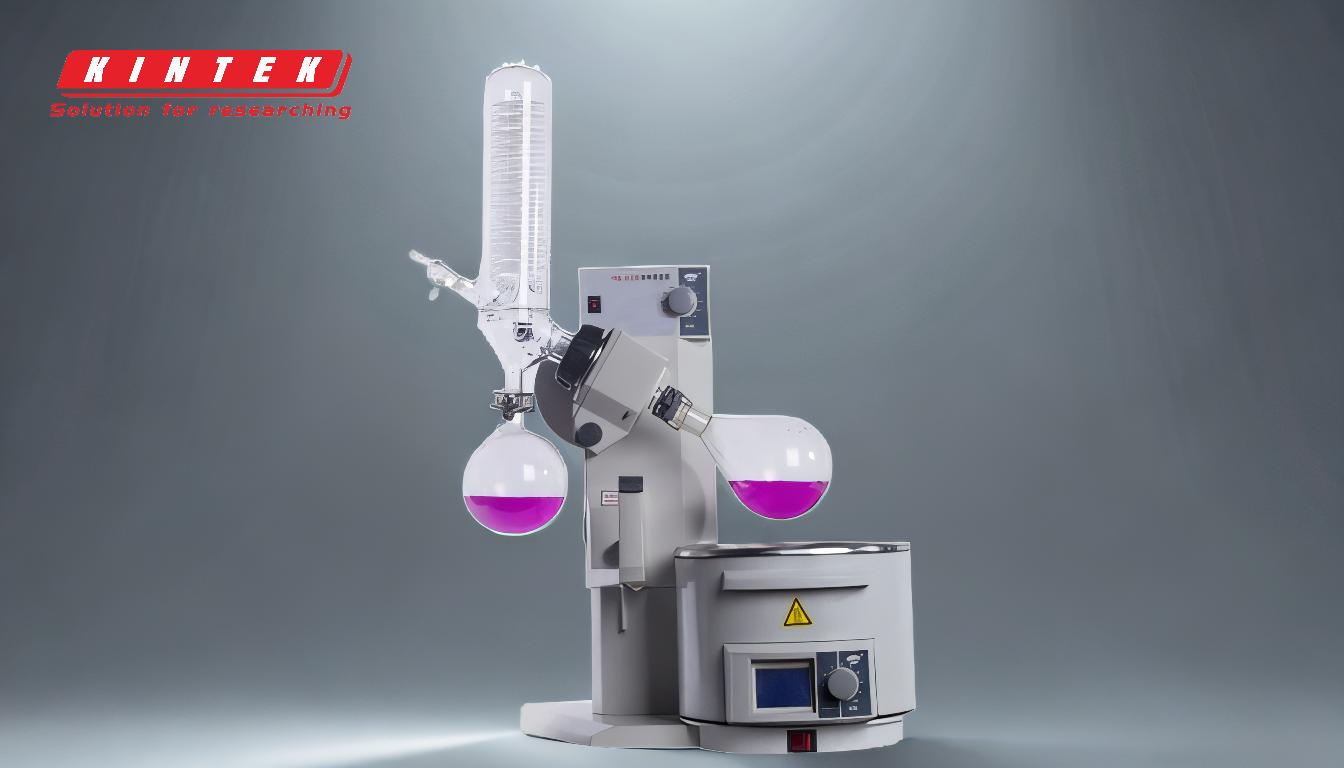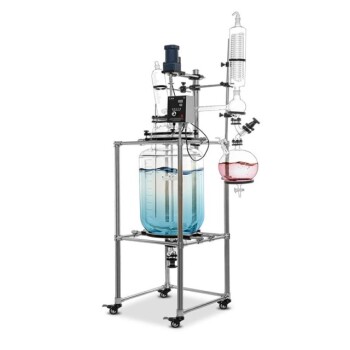The rate of evaporation increases in a rotovap due to a combination of factors that work together to enhance the efficiency of the process. These factors include decreased pressure within the system, increased temperature of the solvent, and the rotation of the flask. The reduced pressure lowers the boiling point of the solvent, allowing it to evaporate at lower temperatures. The heating bath increases the solvent's temperature, further accelerating evaporation. The rotation of the flask creates a thin film of solvent on the inner surface, increasing the surface area exposed to heat and vacuum, which speeds up evaporation. Additionally, the condenser's efficiency ensures that the evaporated solvent is quickly recovered, maintaining the vacuum and allowing continuous evaporation.
Key Points Explained:

-
Decreased Pressure (Vacuum):
- Lowering the pressure inside the rotovap system reduces the boiling point of the solvent. This means that the solvent can evaporate at a much lower temperature than it would under normal atmospheric conditions.
- The vacuum also helps to remove the evaporated solvent from the system quickly, preventing it from re-condensing and allowing the process to continue efficiently.
-
Increased Temperature (Heating Bath):
- The heating bath provides thermal energy to the solvent, increasing its temperature. This added energy helps to overcome the intermolecular forces holding the solvent molecules together, facilitating faster evaporation.
- The temperature of the heating bath is carefully controlled to ensure that it is high enough to promote evaporation but not so high as to degrade heat-sensitive samples.
-
Rotation of the Flask:
- The rotating flask creates a thin, uniform film of solvent on the inner surface of the flask. This thin film has a much larger surface area compared to a static liquid, which significantly increases the rate of evaporation.
- The rotation also helps to distribute the heat evenly throughout the solvent, ensuring that all parts of the solvent are exposed to the same conditions, further enhancing the evaporation rate.
-
Efficient Condensation:
- The condenser in the rotovap system plays a crucial role in maintaining the vacuum and ensuring that the evaporated solvent is quickly and efficiently recovered.
- Efficient condensation prevents the evaporated solvent from re-entering the flask, which would otherwise slow down the evaporation process. The condenser's cooling power must be sufficient to handle the rate of evaporation to maintain the system's efficiency.
-
Control Over Factors:
- Precise control over the rotation speed, vacuum level, and heating bath temperature is essential to optimize the evaporation rate while avoiding damage to heat-sensitive samples.
- The ability to adjust these parameters allows the user to tailor the evaporation process to the specific requirements of the solvent and the sample being processed.
In summary, the rate of evaporation in a rotovap is increased by a combination of reduced pressure, increased temperature, and the rotation of the flask, which together create optimal conditions for efficient and rapid evaporation. The condenser's role in maintaining the vacuum and recovering the solvent is also critical to the overall efficiency of the process.
Summary Table:
| Factor | Impact on Evaporation |
|---|---|
| Decreased Pressure | Lowers boiling point, enabling evaporation at lower temperatures. |
| Increased Temperature | Provides thermal energy, accelerating solvent evaporation. |
| Rotation of the Flask | Creates a thin solvent film, increasing surface area and heat exposure. |
| Efficient Condensation | Recovers solvent quickly, maintaining vacuum and continuous evaporation. |
| Control Over Parameters | Optimizes evaporation rate while protecting heat-sensitive samples. |
Ready to optimize your evaporation process? Contact us today to learn more about rotovap solutions!






















